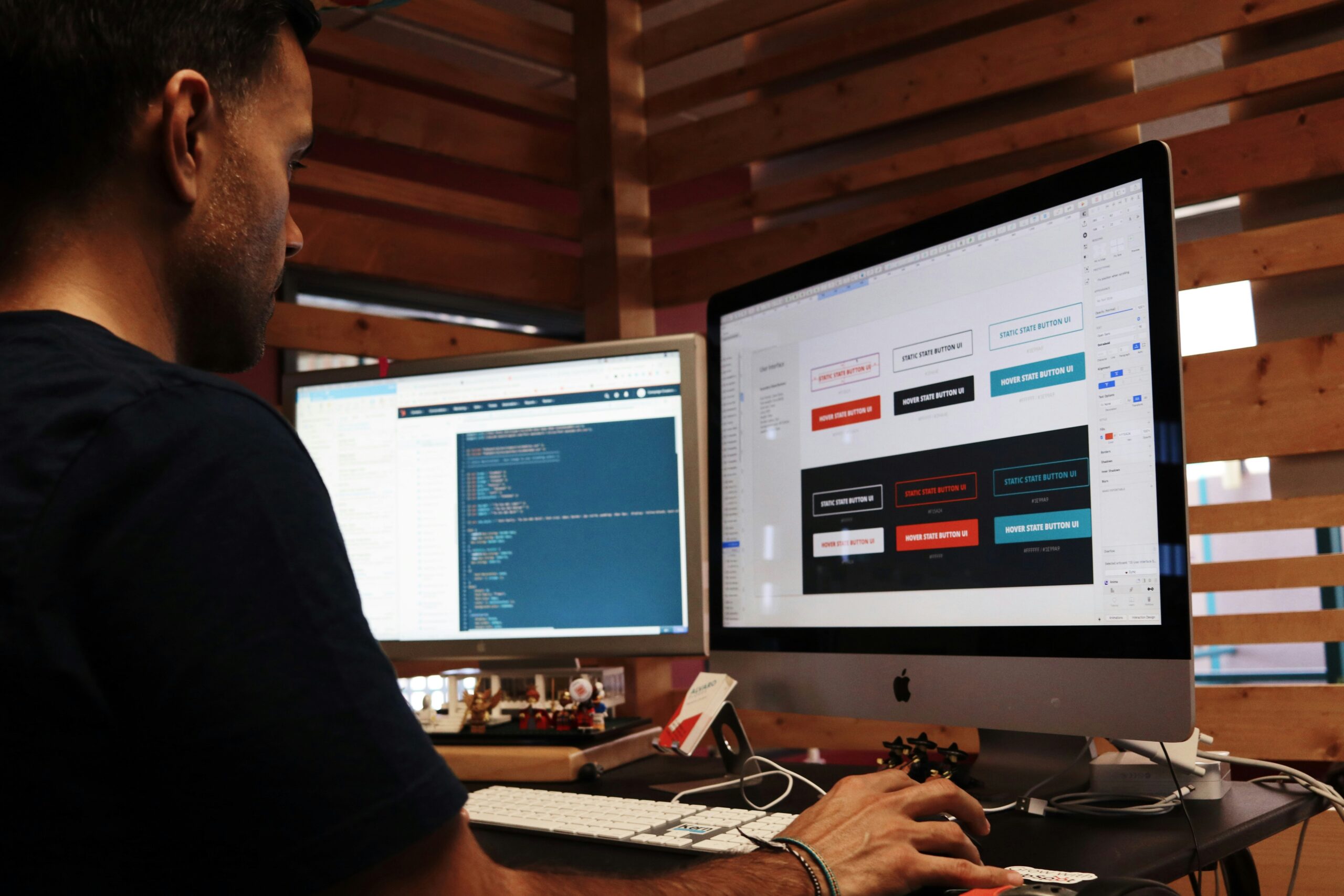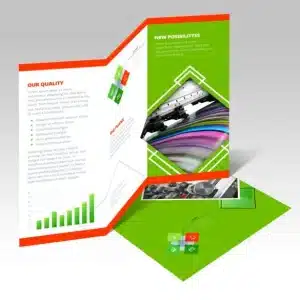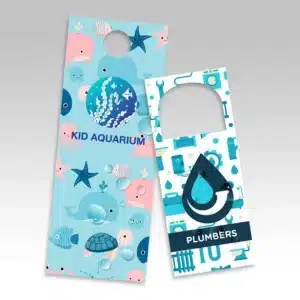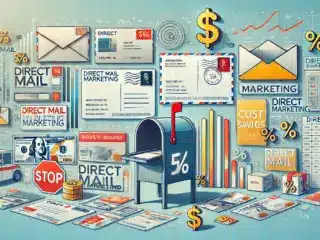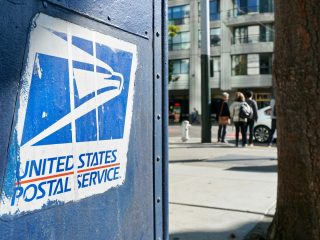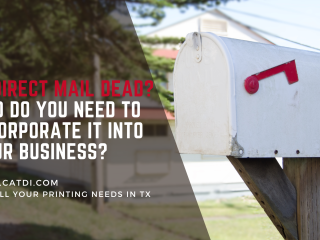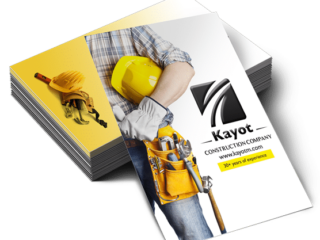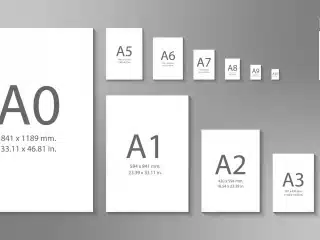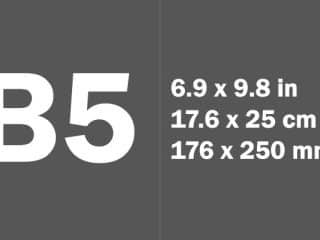Last Updated on October 28, 2024 by Carlos Alonso
Web design can seem intimidating, especially for those just starting out. Yet, with the right guidance, even beginners can create websites that are both visually appealing and user-friendly. Your website is often the first impression visitors have of your brand or business, so creating a professional, welcoming space is essential. Luckily, web design has foundational principles that help newcomers achieve a polished look and smooth functionality, even with limited experience. For more insights into the cost of hiring a professional, check out Catdi Printing’s guide on website design pricing. Whether you’re building a website for personal use or launching one for a business, these seven essential tips will help you create a site that attracts users, communicates effectively, and encourages meaningful engagement. Let’s dive into the basics of web design and discover how to set up a site that impresses from the start.
Understanding Website Design Costs
Here at Catdi Printing, we understand that website design is not a one-size-fits-all service. Factors such as the type of website, its functionality, and the skills required from the designer or agency can all influence the final cost. From DIY platforms to high-end agencies, let’s explore how these different options shape the price. This is why we offer various tiers to fit most of the budgetary needs of small and medium-sized businesses.
Why Website Design Costs Vary
When considering how much you’ll pay to design a website, it’s essential to understand the cost-driving factors. Knowing what goes into a site’s design will not only help you set a realistic budget but will also ensure that you get the most value for your investment.
Complexity and Features
One of the primary determinants of cost is the complexity of the website. A basic informational site with a few pages is much simpler—and therefore cheaper—to design than a complex e-commerce or membership site that requires custom features and user accounts. If your site needs special functionalities, such as appointment booking systems, e-commerce integration, or custom content management systems, expect the cost to rise.
Quality and Uniqueness of Design
While some businesses are fine with pre-made themes, others seek a custom-designed website that aligns perfectly with their brand. Custom designs allow a more unique look and feel but are generally more expensive than template-based designs. Custom websites crafted by experienced agencies, use custom WordPress solutions, and tend to deliver a high-end, professional aesthetic that’s distinctively tailored to the client.
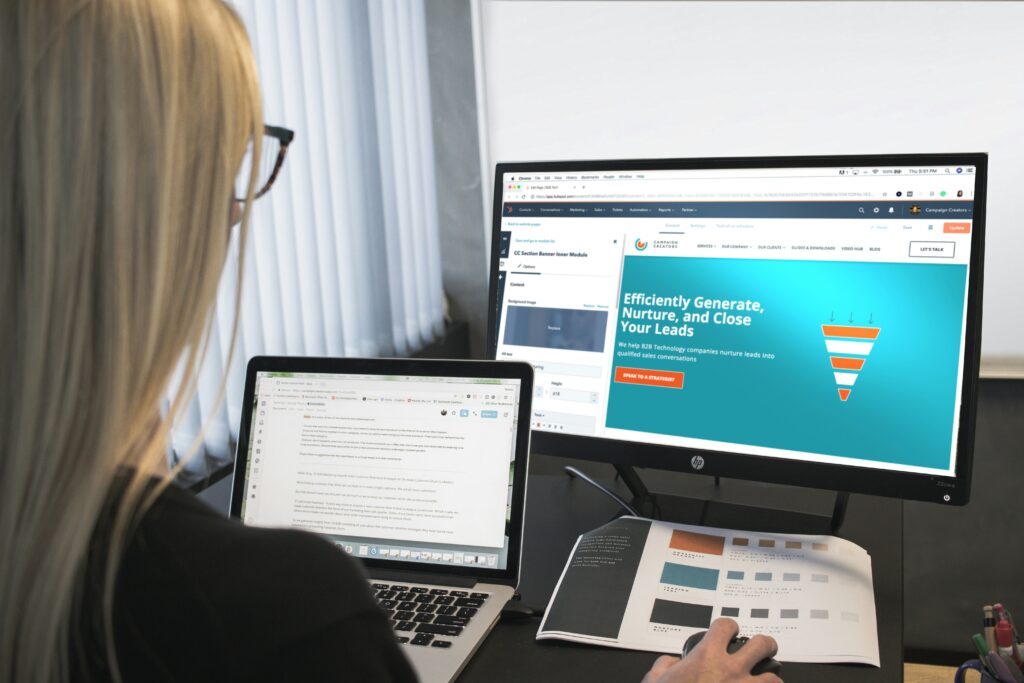
Who Designs Your Website Matters
The expertise and experience of the person or team designing your website play a significant role in the cost. From DIY platforms to hiring a professional agency, each option has its advantages, pricing, and limitations.
Typical Price Ranges for Website Design
Website design services can be broadly categorized based on budget and complexity. Let’s explore the general price ranges you can expect in the current market.
DIY Website Builders: $0 – $300
For those looking to keep costs minimal, DIY website builders such as Wix, Squarespace, or even WordPress offer affordable options. These platforms allow you to create a basic website by using pre-made templates. While cost-effective, DIY solutions often lack the level of customization and professionalism that a business site demands.
Freelance Designers: $500 – $5,000+
Freelancers offer a middle-ground option for small business owners looking for more customization without the higher costs associated with agencies. Freelance pricing varies widely based on the designer’s experience and project complexity. However, working with a freelancer might lack the accountability and long-term support offered by an agency.
Small to Medium Agencies: $3,000 – $15,000+
Small to medium agencies provide a team approach to design, typically including project managers, designers, and developers. They often deliver custom solutions that are well-optimized for SEO and user experience, which is crucial for a business’s online presence. We offer tailored web design packages that cater to different business needs, from informative small business sites to comprehensive e-commerce platforms.
Large Agencies or Complex Projects: $20,000 – $100,000+
At the top of the pricing spectrum are large agencies that handle complex, enterprise-level projects. This price range is often necessary for companies needing custom web applications, high-level security features, and seamless integration with existing business software. Such projects require extensive planning and collaboration, making them a significant investment for established businesses.
Factors That Impact Website Design Costs
When evaluating website design costs, it’s essential to consider various factors that influence the final price tag. Let’s break down the key elements that contribute to the cost and help you understand where your investment is going.
1. Project Scope and Requirements
The scope of a website project can vary greatly depending on the number of pages, types of features, and depth of content. For example, an e-commerce site with hundreds of products, customer accounts, and payment gateways will require significantly more work than a basic informational website. Every additional feature, such as social media integration or an online booking system, can increase the overall cost.
2. Design Quality and Branding Needs
If you want a unique, high-quality website that reflects your brand, you’ll likely need a custom design. This option is more expensive than using pre-made templates but ensures that your website stands out. For instance, companies looking for a cohesive brand experience may choose an agency specializing in custom WordPress websites for maximum flexibility and alignment with their brand identity.
3. Content Development and SEO Integration
While some businesses may already have well-crafted content, others might need a professional touch to develop engaging copy. Professional content writers or SEO specialists can make a substantial difference in your website’s performance, helping it rank better on search engines. Most design companies offer basic SEO as part of their web design services, ensuring your site not only looks good but also performs well in search results.
4. Developer Expertise and Experience Level
The expertise and experience of the developer or agency can also influence the price. A highly skilled developer or designer brings advanced knowledge and skills to the project, such as in-depth understanding of user experience (UX) and advanced coding techniques. While experienced professionals might charge more, they often provide better results that can benefit your business long-term.
5. Mobile Responsiveness and Cross-Browser Compatibility
With more users browsing on mobile devices, having a responsive, mobile-friendly design is essential. Developers must ensure the site functions seamlessly across various devices and browsers, a factor that adds to the project’s complexity. A design that’s fully responsive and cross-browser compatible may cost more upfront but provides a seamless experience for all users.
6. Additional Features and Integrations
Depending on your business needs, you may require additional integrations, such as email marketing platforms, CRM systems, or inventory management tools. Each of these features adds time and cost to the project, so it’s essential to discuss your requirements upfront. Catdi Printing, for example, is known for offering web design solutions that incorporate direct mail and printing options for a fully integrated marketing approach, giving businesses a competitive edge in both digital and print spaces.

Pros and Cons of DIY vs. Hiring a Professional
Once you have an understanding of the factors impacting costs, the next question becomes: should you build your website yourself or hire a professional? Let’s look at the pros and cons of each option.
DIY Website Design: The Affordable but Limited Approach
Pros
- Low Cost: DIY website builders like Wix and Squarespace are budget-friendly.
- Quick SetupMany templates are drag-and-drop, making it easy to make a website quickly.
- Control Over Edits is essential for effective website maintenance.You have control over updates and minor adjustments to your business website.
Cons
- Limited Customization: DIY options often lack the flexibility to create unique, branded designs.
- Lower SEO Performance: DIY platforms are not always optimized for SEO, which could affect your site’s ranking.
- Creating a custom website can be time-consuming but is worth the investment.: Even with templates, building a website requires a significant time investment.
Hiring a Professional: Higher Cost, Higher Quality
Pros
- Customization: Professionals can create custom designs aligned with your brand.
- SEO Optimization: Many agencies offer SEO-optimized designs, boosting your site’s search performance.
- Advanced Features: Professionals can integrate complex functionalities such as e-commerce, booking systems, and CRM integrations.
Cons
- Higher Cost: Professional services are generally more expensive.
- Dependency on a web designer can increase the overall cost to build your website.: You may need ongoing support from the designer for updates and changes.
Choosing the Right Web Design Service for Your Business
With a wide range of options available, how do you choose the best web design service for your business? Here are some key considerations to help guide your decision on the average cost of a business website.
Define Your Budget
Understanding your budget is crucial when selecting a web design service. Are you looking for a simple, functional website to showcase your portfolio, or do you need an extensive e-commerce platform? Clarifying your needs can help you decide whether a DIY solution, freelancer, or agency is the best fit.
Identify Your Business Needs
Consider your business goals and how your website will support them. Do you need a website that allows users to book appointments or make purchases online? Or do you want a site that highlights your portfolio and encourages users to contact you? Identifying these requirements will help you communicate clearly with designers and ensure they understand your project scope.
Research Potential Web Design Partners
Take the time to research potential web design partners and their portfolios. Look for examples of their previous work and see if their style aligns with your brand. For example, Catdi Printing offers a range of web design services suited to various industries, providing businesses with an extensive online presence that integrates smoothly with print marketing needs.
Consider the Long-Term Value of Professional Design
Investing in a professional web design is a strategic decision that can pay off in the long run. A well-designed, user-friendly website can attract more customers, improve search rankings, and strengthen your brand image. While the upfront cost may be higher, the return on investment (ROI) from a professional design can often outweigh the initial expense.
Additional Costs to Consider Beyond Website Design
When budgeting for a website, it’s essential to consider other costs beyond the initial design. While a professionally designed site can provide a strong foundation, there are several ongoing and additional expenses to keep in mind for maintaining and growing your online presence.
1. Domain and Hosting Fees
Most websites require both a domain name and web hosting. Domain names typically cost between $10 and $50 per year, depending on the domain’s popularity and provider. Web hosting costs vary, ranging from a few dollars per month for basic plans to hundreds for dedicated servers. It’s important to choose a hosting provider that offers good uptime, speed, and customer support to ensure your site remains accessible and performs well.
2. Ongoing Maintenance and Updates
Websites require regular updates and maintenance to keep them secure and functioning smoothly. This includes updating plugins, fixing bugs, and ensuring compatibility with the latest web browsers and devices. While some small business owners may handle minor updates themselves, larger businesses may benefit from a maintenance plan provided by their web design agency or a separate provider.
3. Search Engine Optimization (SEO)
If you want your website to rank well on search engines, SEO is a must, and it can impact the overall cost to build your site. Many design agencies, including Catdi Printing’s Houston-based services include competitive pricing for custom website solutions., offer SEO as an add-on to their web design packages, ensuring your site is optimized from day one. Ongoing SEO efforts, such as content updates, backlinking, and performance optimization, can improve your site’s ranking over time, but these services often come with a monthly or project-based fee.
4. Content Creation and Updates
A successful website is rarely static; regular content updates keep your audience engaged and support SEO. From blog posts to product descriptions, having fresh, relevant content helps improve your site’s visibility and provides value to your audience. Content creation can be handled in-house or outsourced to a professional content writer, with costs varying based on the length and frequency of updates.
5. E-commerce Functionality and Payment Processing
For businesses with online stores, e-commerce functionality adds an extra layer of complexity and cost. In addition to integrating payment processors, e-commerce websites often need product catalog management, inventory tracking, and secure payment gateways. Payment processing fees also apply to each transaction, with rates typically around 2-3% of the sale.
Calculating the Return on Investment (ROI) of Website Design
Investing in website design isn’t just about creating a digital space; it’s about generating value for your business. A well-designed website can drive conversions, build brand loyalty, and enhance customer experience, which all contribute to a positive return on investment.
Evaluating the Benefits of Professional Design
Professional design can enhance user engagement by providing an intuitive, aesthetically pleasing experience. Visitors are more likely to trust and engage with a polished and professional business website, and this trust can translate into more leads or sales. Additionally, sites that are SEO-friendly have better chances of attracting organic traffic, helping your business reach a broader audience without paying for ads, which can lower your overall website cost.
Measuring ROI Through Analytics
After launching your website, tracking key metrics such as user engagement, bounce rate, and conversion rate is essential for measuring ROI. These insights help determine whether the site effectively meets your goals and identifies areas for improvement. Google Analytics, for instance, provides detailed metrics on how visitors interact with your site, allowing you to assess the impact of professional design on your business outcomes.
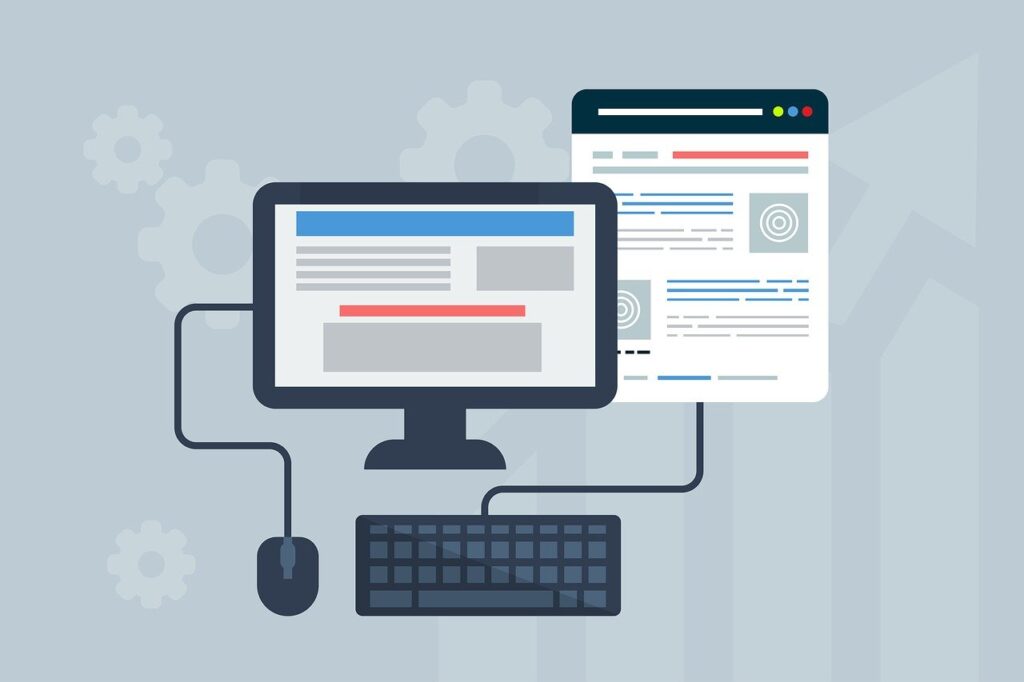
Making the Most of Your Website Investment
To maximize your website investment, consider it as part of a broader marketing strategy rather than a standalone project. Integrating digital marketing efforts, such as SEO, email marketing, and social media, can help drive traffic to your site and improve its performance over time.
Aligning Website Design with Business Goals
Whether you’re a startup or an established business, your website should align with your broader business goals. For instance, if your goal is lead generation, focus on creating clear calls-to-action (CTAs) and easy-to-navigate pages that guide users toward contacting you or making a purchase.
Leveraging Multi-Channel Marketing
Combining your website with other marketing channels, like social media and print marketing, can increase brand visibility and engagement. As a company experienced in both digital and print services, Catdi Printing can provide a holistic approach to website maintenance, allowing businesses to create a cohesive strategy that spans both web and print.
Final Thoughts: Finding the Right Balance Between Cost and Value
The average cost of website design varies widely based on project complexity, design quality, and functionality requirements. While it’s tempting to opt for the cheapest option, investing in a professional, well-designed website often pays off in the long run through better user engagement, SEO, and business growth.
Choosing the right web design partner is crucial, as this decision impacts both the look and performance of your site. Partnering with a reputable agency like Catdi Printing ensures that your site is visually appealing and built with business growth in mind, offering a range of design options tailored to meet various budgets and needs.
Closing Thoughts on Website Design Costs
Investing in a quality website is a significant decision, but one that can bring immense value to your business. By understanding the factors influencing costs and carefully choosing a design partner, you can create a website that not only represents your brand but also drives meaningful results. In today’s competitive market, a professionally designed website is more than just a digital asset—it’s an essential part of your business’s success.

